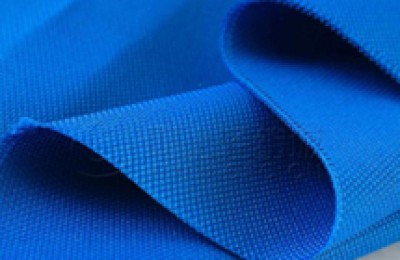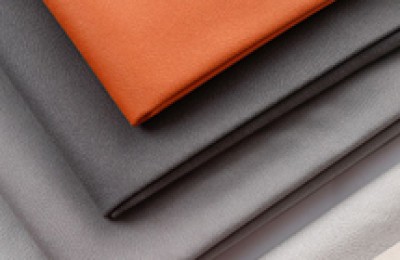The quality of pre-treatment (scouring and bleaching) is not only related to the quality of finished bleached products, but also directly affects the quality of dyeing, printing, finishing and other semi-finished products. Some experts say that 70% of quality problems in dyeing and finishing products are caused by poor pre-treatment. There is a certain reason for this. The quality of dyeing and finishing is related to gray fabrics, equipment conditions and operations, process technology and execution, and dyes. , it is also related to auxiliaries, we focus on the influence of auxiliaries.
01 Common quality issues and additive selection in pre-treatment
1. Whiteness and wool effect Poor whiteness problems
Poor whiteness includes impure and uneven whiteness and the wool effect cannot reach more than 8cm in 3Omin. This is related to the quality of knitted fabrics. For example, if there is a lot of low-grade cotton, the whiteness is often related to the wool effect. It is not easy to achieve good results. Of course, the most critical issues are process formulation and additive selection. In the process formulation.
The amount of H2O2 and NaOH must be sufficient:
H2O2 not only functions as a bleaching pigment in pre-treatment It also has the function of removing impurities (including removing cottonseed hulls). If the amount of H2O2 is insufficient (including decomposing too quickly), the whiteness cannot be guaranteed; NaOH not only provides the alkali (pH) required for H2O2 bleaching, but also cooperates with the scouring agent. It has the greatest impurity removal effect. If the amount of NaOH is insufficient, the impurity removal will be poor, and the gross effect will not meet the requirements first. Of course, the whiteness cannot meet the requirements, so the amount of H2O2 and NaOH can be said to be the primary factor in ensuring whiteness and wool effect.
Select high-quality scouring agents:
Cleaning, emulsification, dispersion, penetration, etc. of scouring agents The comprehensive effect must be excellent to ensure the removal of impurities and ensure whiteness and wool effect. However, the quality of scouring agents on the market is uneven. We must choose products with excellent comprehensive effects instead of just measuring penetration and solid content. Penetration Strength is only one aspect to consider.
Oxygen bleach stabilizer and chelating dispersant:
These two additives are mainly In order to improve the nature, metal ions such as Fe3+ in the water are adsorbed and complexed to prevent the rapid and ineffective decomposition of H2O2 caused by metal ion catalysis. If H2O2 decomposes quickly and ineffectively, its whiteness and wool effect will not meet the requirements, and the fabric will be brittle. Damage or even holes. Therefore, in order to achieve whiteness and wool effect, excellent oxygen bleaching stabilizers must be selected, and the decomposition rate of H2O2 must be considered during the selection. The addition of chelating dispersant not only chelates iron, etc., but also chelates and disperses various impurities in the water, so that these impurities will no longer contaminate the fabric again and cause dark whiteness and graying. Therefore, chelating dispersant not only Both its chelating power for metal ions and its dispersion power should be considered.
Process conditions:
It takes a certain amount of time and temperature to react with additives and impurities , if the conditions are not met, the pigments and impurities will not be completely removed, and the whiteness and hair effect will not be achieved.
Washing:
It is very important to wash after scouring and bleaching. It is necessary to clean and remove the impurities. Guaranteed whiteness and hair effect.
2. The cottonseed hulls are not completely removed
The removal of the cottonseed hulls mainly depends on the expansion and swelling of the cottonseed hulls by NaOH under certain conditions, and then after a certain period of time Mechanical cleaning power removes cottonseed husks. Incomplete removal is mainly caused by insufficient temperature and time. Therefore, sufficient time must be given at a certain temperature to completely remove cottonseed husks. H2O2 and scouring agents are helpful in removing cottonseed husks, so in There must be a certain temperature and time in the pretreatment to ensure the removal of cottonseed hulls. At the same time, NaHSO3 or anthraquinones can be added to help remove cottonseed hulls.
3. Holes and brittle damage
The causes of holes and brittle damage include singeing holes, scratches during processing, and original gray cloth In addition to holes and other causes, the main reason is the presence of Fe3+, Cu2+ and other metal ions in the H2O2 bleaching bath or on the cloth surface; these metal ions catalyze the rapid decomposition of H2O2, causing brittle damage to the fiber. If metal ions (such as rust, etc.) are too concentrated in one place, the fibers and yarns will become brittle and form holes. Therefore, in H2O2 bleaching, high-quality oxygen bleaching stabilizers and chelating dispersants must be selected to complex and absorb the fabric and The metal ions in the bleach bath prevent H2O2 from decomposing too quickly and causing holes or brittle damage. If it is used for bleaching, of course, the cloth will be brittle if it contains alkali (the alkali is not removed) or acid (the acid is not removed). At the same time, under high temperature and alkali conditions, the fabric will be brittle and damaged when there is air. This situation can be prevented by adding weak reducing agents such as NaHSO3. In addition, moisture and mildew in fabrics are also one of the causes of brittleness and holes.
02 Common quality issues in dyeing and selection of auxiliaries
1. Unqualified color fastness
Color fastness to sunlight Fastness, soaping fastness, perspiration fastness, rubbing fastness, blooming fastness, ironing fastness, etc. The key to these fastnesses lies in the structural properties of the dye, and is also related to the fiber, dye concentration, dyeing and finishing process, External conditions are closely related, so the key to whether the color fastness reaches the standard is the selection of dyes, followed by the dyeing process and the application of auxiliaries.
When producing a dyeing process certificate, it must be reasonably determined based on the dye, fiber and customer indicators, so that the dye, with the help of additives, can dye the fiber as firmly as possible under certain conditions and fully fix it. For auxiliaries, one is to use good leveling agents and dye accelerators to make the dye slowly, evenly and fully dye the fibers; the other is to add chelating agents to overcome the floating color caused by the complexation of the dye with metal ions in the water, and Reduce the hydrolysis of reactive and other dyes in water; third, choose an excellent soaping agent to remove floating colors and prevent floating colorsThe softener changes from an emulsified state to a slag-like substance that adheres to the fabric, etc.; (6) The original tar-like softener and other substances in the tank fall off and stick to the fabric.
Silicon oil stains
Silicon oil stains are the most difficult type of stains to treat. Reasons: (1) The pH value of the cloth surface is not neutral, especially with alkali, which causes the silicone oil to break emulsification and float oil; (2) The water quality of the treatment bath is too poor and the hardness is too high. Silicone oil is easy to dissolve in water with a hardness greater than 15Omg/L. Floating oil; (3) Silicone oil quality issues, including poor emulsification (poor emulsifier selection, poor emulsification process, too large emulsified particles, etc.), intolerance to shearing (mainly problems with the silicone oil itself, such as silicone oil quality, emulsification system , silicone oil varieties, silicone oil synthesis process, etc.). You can choose silicone oil that is resistant to shear, electrolytes, and pH changes, but you should pay attention to the use method and environment of the silicone oil. You can also consider choosing hydrophilic silicone oil.
Poor raising
Poor raising is related to the operation of the raising machine (such as tension control, raising (Roller speed, etc.) are closely related. For fluff, when applying softener (commonly known as waxing), controlling the dynamic and static friction coefficients of the fabric is the key, so the preparation of the fluff softener is the key. If the softener is not used well, It will directly cause poor fluffing, even tearing or door width changes.
2. Common quality problems in resin finishing
Formaldehyde problem
The formaldehyde content exceeds the standard due to the free formaldehyde in the resin or the formaldehyde decomposed from the resin with N-hydroxymethyl structure. Ultra-low formaldehyde resin or formaldehyde-free resin should be used.
Of course, formaldehyde problems come from a wide range of sources, such as color fixing agents Y and M, softeners MS-20 and S-l, waterproofing agents AEG and FTC, adhesives RF, flame retardants THPC and other additives. It can also cause formaldehyde to exceed the standard. At the same time, formaldehyde migration in the air may also cause formaldehyde on fabrics to exceed the standard.
Yellowing or discoloration problem
After resin finishing, yellowing will generally occur, so :, to reduce yellowing and discoloration as much as possible.
The problem of strength decrease
Generally, resin finishing will cause strength decrease, and fiber protective agent can be added. , such as oxidized polyethylene wax emulsion.
Feel problem
Generally, resin finishing will cause the handfeel to become hard, so soft ingredients can be added. But be careful not to affect the quality of resin finishing. The hand feel has improved, and the problem of power drop has also been greatly improved. However, problems such as a hard feel caused by surface resin are caused by the resin itself and drying, and need to be improved accordingly.
3. Other quality problems
Metal ions exceeding the standard
Metal ions Cu, Cr, Co, Ni, Zn, Hg, As, Pb, Cd, etc. need to be tested in export products. If they exceed the standard, they will have serious consequences like formaldehyde exceeding the standard. Among the additives, there are relatively few metal ions of this type, but some additives can cause exceeding the standard. For example, the flame retardant antimony trioxide emulsion contains a large amount of mercury, and the waterproofing agent CR, phoboTexCR (Ciba), Cerolc (Sandoz), etc. chromium. When using mordant dyes on wool, the mordant dye used is potassium dichromate or sodium dichromate or sodium chromate, and Cr6+ will exceed the standard.
Color change problem
After finishing, there are many color change problems. It is necessary to pay attention to the selection of dyes during dyeing. During dyeing, corresponding post-finishing must be carried out according to the process to determine whether the selected dye will change color under the action of additives. Of course, it is best to choose one that will not cause color change. Finishing agents are the most ideal solution, but they often have limitations (for example, copper-containing antibacterial agents have colors themselves, and chromium-containing waterproofing agents also have colors, which can cause discoloration of fabrics). At the same time, it is also necessary to consider the drying process of dyed fabrics. Factors such as light color and discoloration caused by dye sublimation during dry baking and yellowing caused by excessive temperature.
APEO exceeds the standard
APEO as an indicator is also strictly restricted by some countries. This indicator and The scouring agent and penetrating agent in pre-treatment, the cleaning agent and leveling agent in printing and dyeing, and the emulsifier in softener during finishing are all related. At present, TX and NP series surfactants are widely used as additives. In the case of raw materials, its prevention is difficult. The only way is for printing and dyeing factories to insist on using environmentally friendly additives and strictly prevent additives containing APEO and toxic and harmful substances from entering the factory.
There are many common quality problems in dyeing and finishing products, and there are many reasons for them. Some quality problems cannot even be analyzed. Here we only discuss the relationship with auxiliaries and communicate with peers. If there is anything inappropriate, please invite experts. Peers make corrections. </p








